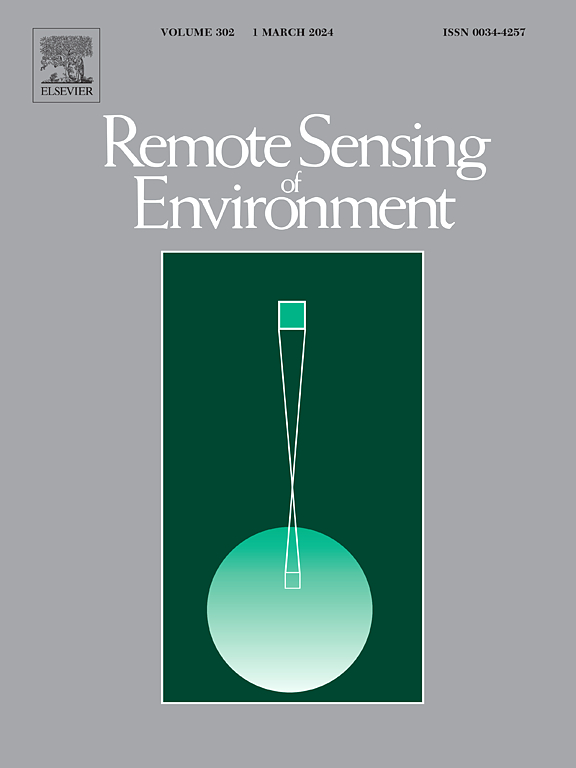Sea surface wind speed retrieval based on ICESat-2 ocean signal vertical distribution
IF 11.1
1区 地球科学
Q1 ENVIRONMENTAL SCIENCES
引用次数: 0
Abstract
Accurate retrieval of sea surface wind speed is crucial for ecological research and marine resource development. The advent of satellite technology provides a feasible approach for global wind speed retrieval. As a photon-counting lidar, ICESat-2 provides unparalleled details of the sea surface and has the potential for sea surface wind speed retrieval. To facilitate the retrieval of sea surface wind speed from ICESat-2, a vertical ocean signal distribution model of ICESat-2 was established, and then training samples were collected by changing the parameters and inputted into the back propagation neural network to fit the relationship between the ICESat-2 vertical distribution signal and the sea surface wind speed. The model considered both environmental factors (solar noise, atmospheric absorption, sea surface reflection, water backscattering, etc.) and hardware characteristics (the spatial and temporal distribution of laser energy, dead time, and dark noise of the detectors, etc.). The validation against MERRA-2 data revealed that the RMSE is 1.57 m/s for nighttime and 1.89 m/s for daytime, while buoy comparisons showed RMSE values of 1.53 m/s for nighttime and 1.82 m/s for daytime. Additionally, comparisons of global monthly mean results also agree well, underscoring the capability of ICESat-2 in sea surface wind speed retrieval.
求助全文
约1分钟内获得全文
求助全文
来源期刊

Remote Sensing of Environment
环境科学-成像科学与照相技术
CiteScore
25.10
自引率
8.90%
发文量
455
审稿时长
53 days
期刊介绍:
Remote Sensing of Environment (RSE) serves the Earth observation community by disseminating results on the theory, science, applications, and technology that contribute to advancing the field of remote sensing. With a thoroughly interdisciplinary approach, RSE encompasses terrestrial, oceanic, and atmospheric sensing.
The journal emphasizes biophysical and quantitative approaches to remote sensing at local to global scales, covering a diverse range of applications and techniques.
RSE serves as a vital platform for the exchange of knowledge and advancements in the dynamic field of remote sensing.
 求助内容:
求助内容: 应助结果提醒方式:
应助结果提醒方式:


